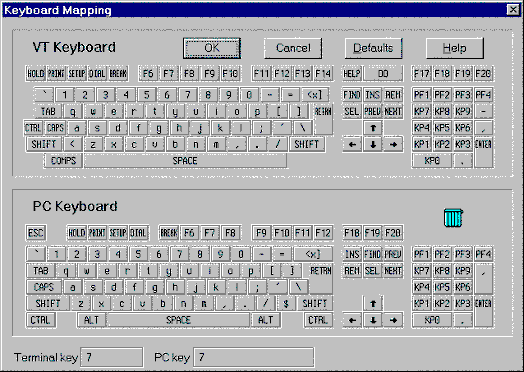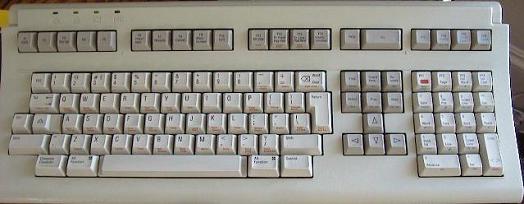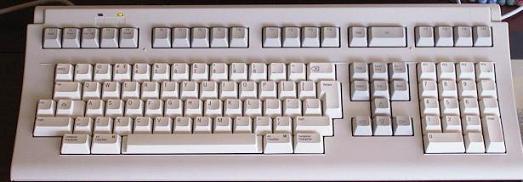|
All Keyboards are not Created Equal
Keyboard mapping is the least mentioned feature in commercial
terminal emulation packages and, not surprisingly, it turns
out to be the most difficult part of producing and using a
PC terminal emulator software package. The graphics and communication
part of the package was difficult to master at first but in
the end a completely achievable goal. Any software company
that doesn't have have the graphics and communication portion
of the emulator completely under control is probably out of
business by now. Likewise, PC based enhancements came almost
naturally as programmers and end users came to expect certain
PC style features in any PC application. Although some handle
it better than others, it would be hard to find a PC based
terminal emulator today that didn't have a scroll bar and
a cut and paste feature.
But keyboard mapping remains the single most confusing and
irritating feature of terminal emulation. There are only 101/102
keys on a standard PC keyboard and there are 105 unique keys
on a VT keyboard. Of the 101/102 PC keys at least four, the
two ALT's and the ESCAPE, cannot be used by themselves. And
the PC CONTROL key represented twice making one less key.
In all that leaves 97/98 PC keys to represent 105 VT keys
or at least 7 VT keys that must be represented in some fashion
other that a single key stroke. The only way to use the PC
keyboard to present these 7 VT key strokes is to create a
code or map to combine two PC key strokes (concurrent) to
represent the extra VT keys. This was easy enough for programmers
to do but hard for users to understand and remember. To make
matters worse, no standard of PC to VT keyboard mapping was
ever developed to maintain order in the multi-vendor PC terminal
emulator market. The illustration below shows the key mapping
on a very good terminal emulator, Ericom Powerterm 525 (available
from Compaq.) Can you find the missing VT keys?

Other terminal emulator publishers, such as Walker, Rich
& Quinn (WRQ), who publish the Reflection series of product
have a similar mapping.
The web-TERMINAL function of CCSS Interactive Learning is
based upon a Java terminal emulator from WRQ, "Reflection
for the Web". This brings in to play an even more restrictive
environment since the "NUM LOCK" key can not be
remapped, so the PF1 key, a very important key on VT terminals
needs to be remapped to something else. In our case we have
mapped it to the "/" key on the PC right-hand keypad,
since it is quite close to the same location as the PF1 key,
beside it. Additionally the PF2 key is mapped to Control-/.
The lack of keys on the PC keyboard for terminal emulation
was even more acute in the days of the XT PC which had only
88 keys. But it did force Digital Equipment Corporation, DEC,
to come up with a clever solution. The DEC engineers developed
a PC keyboard with more keys and a layout similar to the VT220's
terminal's LK201 keyboard. Users and engineers would have
liked to have installed the LK201 keyboard itself but it had
a very simple and different set of key codes, cable, and connector
system. So they made a keyboard, LK-250, that looked like
the LK-201 but used PC key codes, cables, connectors and had
annotated, in addition to VT key names, the PC key names.
For users who needed a PC and a terminal on their desk, this
was the best of all possible worlds. When the modern version
of VT keyboard, LK-401, was released, DEC upgraded the LK-250
to an LK-401 look alike called the LK-450. The quality of
the keyboard was high, especially when compared to the PC
keyboards of the early 90's, and the cost was reasonable compared
to the cost of a terminal emulator software package. Most
importantly it came with software drivers which made it function
correctly in the PC environment.

In the late 90's DEC and then Compaq began replacing what
had been specialized VAX and Alpha graphics cards, displays,
mice, and keyboards with parts similar to or actually made
for PC's. The reason was that the shear volume of PC parts
being produced made them more functional at a much lower price
than any proprietary, specially designed and manufactured
part for an Alpha or VAX could be. Terminal CRT displays were
replaced with a control box and PC displays and the new keyboard,
the LK-411, was designed with an ESCAPE and ALT keys and used
a miniDIN connector just like a PC used for its keyboard.
Users and IS professionals who liked the LK-450 PC/VT keyboard
expected that this move towards using PC parts would perpetuate
a version of the VT terminal keyboard for PC's but this was
not to be. For some unknown reason, Compaq decided to discontinue
support for a PC keyboard with VT terminal functions.
The present follow on to the LK-411 keyboard, the LK-461,
with its miniDIN connector will plug into a PC and work but
this use of it is not supported by Compaq. An unsupported
driver is available on the web for download from Compaq. The
one of our consultants uses the LK-461-A2 on his PC everyday
and is happy with its function. But without support it's unlikely
that any IS professional would want to take the chance of
introducing it to a site where it might be of real use to
users force to fumble around with PC terminal emulation keyboard
mapping.
An additional problem is the lack of PC annotation on the
keys. The LK-450 had the PC key functions annotated in blue
on each key where the PC function could not be guessed from
the VT keyboard annotation. This VT/PC annotation is not present
on any variant of the LK-411 or LK-461. The author still recommends
to the inquisitive that they try out the LK-461-A2 with the
unsupported driver from Compaq on the web, especially if they
already have one on site. It's possible for an experienced
user who can remember which PC function each has, to get extra
utility from from using this keyboard. Below is an illustration
of the LK-461-A2

Compaq
LK Keyboard Support Files and Links
|



